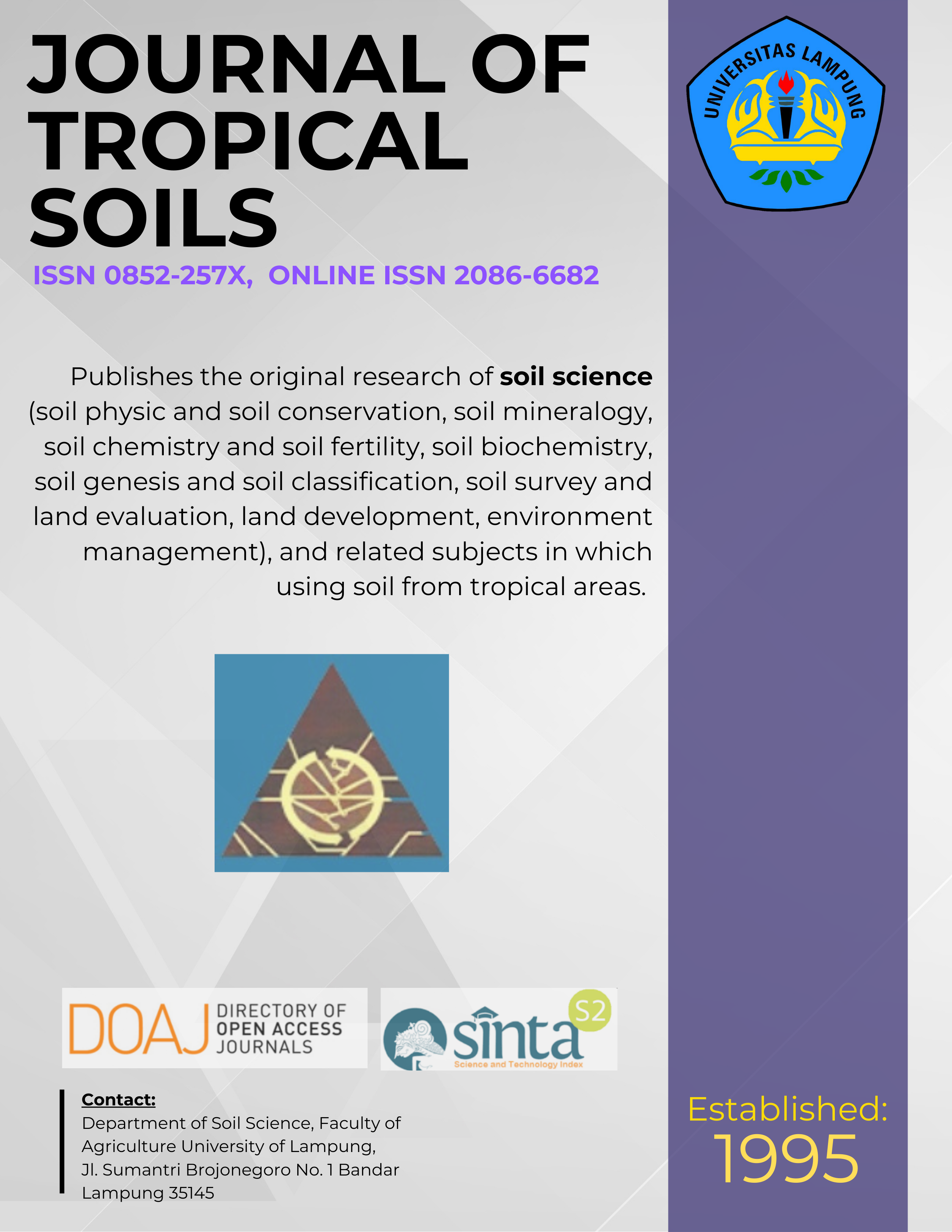Nutrient Removal by Rice Cultivated in Newly Opened Wetland Rice in Bulungan District, East Kalimantan
Main Article Content
Abstract
Highly weathered Indonesian soils and potential acid sulphate soils are mainly granted for developing newly
opened wetland rice field to meet rice growing demand in Indonesia. Nutrient removal by rice harvest product of
Ciliwung variety planted in newly opened wetland rice was studied in Bulungan District, in 2009. The aims were to
examine the nutrient taken out by rice harvest product and to properly manage its fertility status to sustain rice
farming. Six treatments were studied including T0: farmers practices, T1: farmer practices + compost + dolomite, T2:
NPK recommended rate, N and K were split two times, T3: NPK recommended rate, N and K were split three times,
T4: NPK recommended rate, N and K were split three times + compost + dolomite and T5: NPK recommended rate,
N and K were split two times + compost + dolomite. The results indicated that the highest concentrations of N, P,
and K in rice grain and rice straw were observed at NPK with recommendation rate in which N and K were split three
times + straw compost + dolomite (T4). The T4 (NPK with recommendation rate in which N and K were split three
times + straw compost + dolomite) also showed the highest nutrient removal by harvest product. Depending on the
treatments, total nutrients removal through rice grains and rice straw varied from 61.81 to 101.71 kg N, 4.31 to
13.69 kg P and from 95.77 to 171.16 kg K ha-1 season-1, meaning that at least about 137 to 225 kg urea, 50 to 160
kg SP-36 and 190 to 339 kg KCl ha-1 season-1 should be given to replace nutrient removed by harvest product and
to avoid any nutrients depletion. When all rice straws were returned to the field as compost, about 55 to 133 kg urea,
25 to 110 kg SP-36 and 10 to 19 kg KCl ha-1 season-1 should be added to substitute nutrient removed by rice grain.
[How to Cite: Sukristiyonubowo, K Nugroho and T Vadari. 2012. Nutrient Removal by Rice Cultivated in Newly Opened Wetland Rice in Bulungan District, East Kalimantan. J Trop Soils 17: 115-120. Doi: 10.5400/jts.2012.17.2.115]
Â
[Permalink/DOI: www.dx.doi.org/10.5400/jts.2012.17.2.115]
Downloads
Article Details
Issue
Section
License for Authors
Authors who publish with this journal agree to the following terms:
- Authors retain copyright and grant the journal right of first publication with the work simultaneously licensed under a Creative Commons Attribution License that allows others to share the work with an acknowledgement of the work's authorship and initial publication in this journal.
- Authors are able to enter into separate, additional contractual arrangements for the non-exclusive distribution of the journal's published version of the work (e.g., post it to an institutional repository or publish it in a book), with an acknowledgement of its initial publication in this journal.
- Authors are permitted and encouraged to post their work online (e.g., in institutional repositories or on their website) prior to and during the submission process, as it can lead to productive exchanges, as well as earlier and greater citation of published work (See The Effect of Open Access).
License for Regular Users
Other regular users who want to cite, distribute, remix, tweak, and build upon author’s works, even for commercial purposes, should acknowledge the work’s authorship and initial publication in this journal, licensed under a Creative Commons Attribution License.

